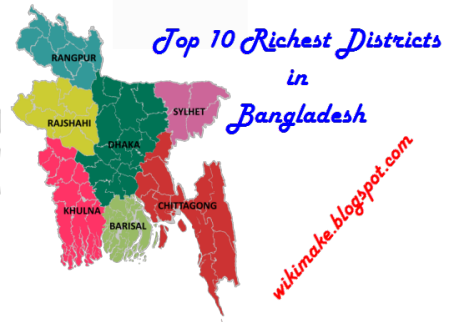PART-I ((MCQs) (COMPULSORY)
Q.1. (i) Select the best option/answer and fill in the appropriate Circle on the OMR Answer Sheet. (20x1=20)
(ii) Answers given anywhere, other than OMR Answer Sheet, shall not be considered.
1. Which novel is not written by Jane Austen?
(a)Emma (b)The Chimes (c) Persuasion (d)Mansfield Park (e)None of these
2. Shaw wrote more than:
(a)30 plays (b)40 plays (c) 50 plays (d)60 plays (e)None of these
3. Shaw died at the age of:
(a)75 (b)85 (c) 95 (d)105 (e)None of these
4. Jack Worthing is a character created by:
(a)Shaw (b)Dickens (c) Browning (d)Hardy (e)None of these
5. “Adam Bede” is a:
(a)Play (b)Novel (c) Short Story (d)Poem (e)None of these
6. Dickens sprang to fame with a publication of:
(a)Hard Times (b)David Copperfield (c) Pickwick Papers (d)Great Expectations (e) None of these
7. Who served as an Irish senator for two terms?
(a)Wilde (b)Shaw (c) Ibsen (d)Yeats (e)None of these
8. “John Bull’s Other Island” is written by:
(a)Shaw (b)Wilde (c) Hemingway (d)Beckett (e)None of these
9. Lilliputians symbolise excessive human:
(a)Jealousy (b)Confidence (c) Pride (d)Ego (e)None of these
10. Houyhnhnms represent life governed by sense and:
(a)Moderation (b)Patience (c) Understanding (d)Compromise (e)None of these
11. Cordelia’s chief characteristic is her:
(a)Beauty (b)Devotion (c) Sympathy (d)Kindness (e)None of these
12. Henry Higgins is a character in:
(a)Pygmalion (b)Saint Joan (c) Major Barbara (d)Candida (e)None of these
13. Eliot worked for Faber and Faber as an/a:
(a)Assistant (b)Director (c) Writer (d)Editor (e)None of these
14. Wordsworth was appointed as poet Laureate in:
(a)1843 (b)1844 (c) 1845 (d)1846 (e)None of these
15. Hemingway was a great fan of:
(a)Cricket (b)Baseball (c) Softball (d)Football (e)None of these
16. “Jude the Obscure” is a:
(a)Comedy (b)Tragedy (c) Tragi-Comedy (d)Black Comedy (e)None of these
17. Eliot was influenced by:
(a)Ezra Pound (b)Shaw (c) Hardy (d)Wilde (e)None of these
18. Who became the poet Laureate of England and Ireland during the reign of Queen Victoria?
(a)Tennyson (b)Browning (c) Hardy (d)Lawrence (e)None of these
19. Hemingway also worked as a:
(a)Carpenter (b)Painter (c) Surgeon (d) Driver (e)None of these
20. “Tales from Shakespeare” is written by:
(a)Shakespeare (b)Lamb (c) Lawrence (d)Mary Anne Evans (e)None of these
PART-II
NOTE: (i) Part-IIis to be attempted on the separate Answer Book.
(ii)Candidate must write Q. No.in the Answer Bookin accordance with Q. No.in the Q. Paper.
(iii) Attempt ONLY FOUR questions from PART-II, select TWOquestions from EACH
SECTION. ALL questions carry EQUAL marks.
(iv) Extra attempt of any question or any part of the attempted question will not be considered.
SECTION-A
*************
Q.2. Shakespeare includes characters in Hamletwho are obvious foils for Hamlet,
including, most obviously, Horatio, Fortinbras, Claudius and Laertes. Compare and
contrast Hamlet with each of these characters. How does each respond to the crises
with which he is faced?
(20)
Q.3. Gulliver’s Travelscould in fact be described as one of the first novels of modern
alienation, focusing on an individual’s repeatedfailures to integrate into societies to
which he does not belong. Present your view point backed by supporting arguments.
(20)
Q.4. Though Jane Austen satirizes snobs in her novels; some critics have accused her of
being a snob herself. Giving special consideration to Mrs. Bennet and Mr. Collins in
Pride and Prejudice, argue and defend one side of this issue.
(20)
Q.5. Because of its stunning, violent imagery and terrifying ritualistic language, “The
Second Coming” is one of Yeats’ most famous and most anthologized poems; it is also
one of the most thematically obscure and difficult poem to understand. Elaborate with
relevant textual evidence.
(20)
SECTION-B
Q.6. “The Waste Land” is full of sounds, onomotopoiea: from “jug jug jug” to “drip drop”
to “twit twit” to “co co rico.” What is the significance of this technique for the poem as
a whole? Analyze each of the moments in which such language appears.
(20)
Q.7. Both Santiago and the Marlin display qualities of pride, honor, and bravery, and both
are subject to the same eternal law: they must kill or be killed. How does Earnest
Hemingway present this battle in Old Man and the Sea?
(20)
Q.8. Though it seems as if nothing happens in the play, actions actually play a very
important role in Waiting for Godot. They stag directions of the play constitute nearly
half of the text, suggesting that the actions, expressions, and emotions of the actors are
as important as the dialogue. Examine the significance of the stage directions given by
Samuel Beckett.
(20)
Q.1. (i) Select the best option/answer and fill in the appropriate Circle on the OMR Answer Sheet. (20x1=20)
(ii) Answers given anywhere, other than OMR Answer Sheet, shall not be considered.
1. Which novel is not written by Jane Austen?
(a)Emma (b)The Chimes (c) Persuasion (d)Mansfield Park (e)None of these
2. Shaw wrote more than:
(a)30 plays (b)40 plays (c) 50 plays (d)60 plays (e)None of these
3. Shaw died at the age of:
(a)75 (b)85 (c) 95 (d)105 (e)None of these
4. Jack Worthing is a character created by:
(a)Shaw (b)Dickens (c) Browning (d)Hardy (e)None of these
5. “Adam Bede” is a:
(a)Play (b)Novel (c) Short Story (d)Poem (e)None of these
6. Dickens sprang to fame with a publication of:
(a)Hard Times (b)David Copperfield (c) Pickwick Papers (d)Great Expectations (e) None of these
7. Who served as an Irish senator for two terms?
(a)Wilde (b)Shaw (c) Ibsen (d)Yeats (e)None of these
8. “John Bull’s Other Island” is written by:
(a)Shaw (b)Wilde (c) Hemingway (d)Beckett (e)None of these
9. Lilliputians symbolise excessive human:
(a)Jealousy (b)Confidence (c) Pride (d)Ego (e)None of these
10. Houyhnhnms represent life governed by sense and:
(a)Moderation (b)Patience (c) Understanding (d)Compromise (e)None of these
11. Cordelia’s chief characteristic is her:
(a)Beauty (b)Devotion (c) Sympathy (d)Kindness (e)None of these
12. Henry Higgins is a character in:
(a)Pygmalion (b)Saint Joan (c) Major Barbara (d)Candida (e)None of these
13. Eliot worked for Faber and Faber as an/a:
(a)Assistant (b)Director (c) Writer (d)Editor (e)None of these
14. Wordsworth was appointed as poet Laureate in:
(a)1843 (b)1844 (c) 1845 (d)1846 (e)None of these
15. Hemingway was a great fan of:
(a)Cricket (b)Baseball (c) Softball (d)Football (e)None of these
16. “Jude the Obscure” is a:
(a)Comedy (b)Tragedy (c) Tragi-Comedy (d)Black Comedy (e)None of these
17. Eliot was influenced by:
(a)Ezra Pound (b)Shaw (c) Hardy (d)Wilde (e)None of these
18. Who became the poet Laureate of England and Ireland during the reign of Queen Victoria?
(a)Tennyson (b)Browning (c) Hardy (d)Lawrence (e)None of these
19. Hemingway also worked as a:
(a)Carpenter (b)Painter (c) Surgeon (d) Driver (e)None of these
20. “Tales from Shakespeare” is written by:
(a)Shakespeare (b)Lamb (c) Lawrence (d)Mary Anne Evans (e)None of these
PART-II
NOTE: (i) Part-IIis to be attempted on the separate Answer Book.
(ii)Candidate must write Q. No.in the Answer Bookin accordance with Q. No.in the Q. Paper.
(iii) Attempt ONLY FOUR questions from PART-II, select TWOquestions from EACH
SECTION. ALL questions carry EQUAL marks.
(iv) Extra attempt of any question or any part of the attempted question will not be considered.
SECTION-A
*************
Q.2. Shakespeare includes characters in Hamletwho are obvious foils for Hamlet,
including, most obviously, Horatio, Fortinbras, Claudius and Laertes. Compare and
contrast Hamlet with each of these characters. How does each respond to the crises
with which he is faced?
(20)
Q.3. Gulliver’s Travelscould in fact be described as one of the first novels of modern
alienation, focusing on an individual’s repeatedfailures to integrate into societies to
which he does not belong. Present your view point backed by supporting arguments.
(20)
Q.4. Though Jane Austen satirizes snobs in her novels; some critics have accused her of
being a snob herself. Giving special consideration to Mrs. Bennet and Mr. Collins in
Pride and Prejudice, argue and defend one side of this issue.
(20)
Q.5. Because of its stunning, violent imagery and terrifying ritualistic language, “The
Second Coming” is one of Yeats’ most famous and most anthologized poems; it is also
one of the most thematically obscure and difficult poem to understand. Elaborate with
relevant textual evidence.
(20)
SECTION-B
Q.6. “The Waste Land” is full of sounds, onomotopoiea: from “jug jug jug” to “drip drop”
to “twit twit” to “co co rico.” What is the significance of this technique for the poem as
a whole? Analyze each of the moments in which such language appears.
(20)
Q.7. Both Santiago and the Marlin display qualities of pride, honor, and bravery, and both
are subject to the same eternal law: they must kill or be killed. How does Earnest
Hemingway present this battle in Old Man and the Sea?
(20)
Q.8. Though it seems as if nothing happens in the play, actions actually play a very
important role in Waiting for Godot. They stag directions of the play constitute nearly
half of the text, suggesting that the actions, expressions, and emotions of the actors are
as important as the dialogue. Examine the significance of the stage directions given by
Samuel Beckett.
(20)







